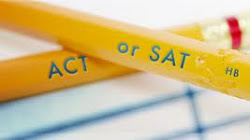Understanding your SAT Math Score and how it is derived is critical to scoring high.
When I began playing organized soccer I caught the very first ball kicked to me. I thought I did well and was confused when my coach yelled at me and the opponents got possession of the ball and a free kick. Catching the ball was natural to me, but not a great strategy for a fullback in soccer. Likewise,some test strategies that work well in school back-fire on the SAT because the SAT has a different set of rules. It is difficult to win with out knowing these rules.
The scaled score on the SAT is the final score we receive.
This score is curved and ranges between 200 and 800 for each section of the test. 500 is the national average (50th percentile) for a specific test section and date nationally. The scores that we see are derived from a raw score. The average of the raw scores is assigned a 500.< You cannot score below a 200. The SAT raw score determines the final scaled score.
As such, it is the score that you should focus on. It is calculated by giving 1 raw point for each correct answer and subtracting ¼ raw point for each wrong answer on every multiple choice question. No points are lost in the Student Produced open-ended section of the Math, so it is best to guess if you don’t know the answer in this section. Do not guess on the Multiple Choice questions unless you can eliminate three of the choices because they are definitely wrong. Otherwise, guessing leads to lower scores.
In school, if an answer is blank, it is wrong. So it is better to guess than to leave an answer blank. While this is a good strategy in school it is a bad strategy for the SAT. It is better to leave a blank and not give away fractional raw points. After all, there is an 80% chance that a guess is wrong.
This means that a guess is far more likely to hurt your score than to help it. Don’t ever guess out of five multiple choices and keep practicing. Questions? Contact WaveLength and we will be happy to answer.


